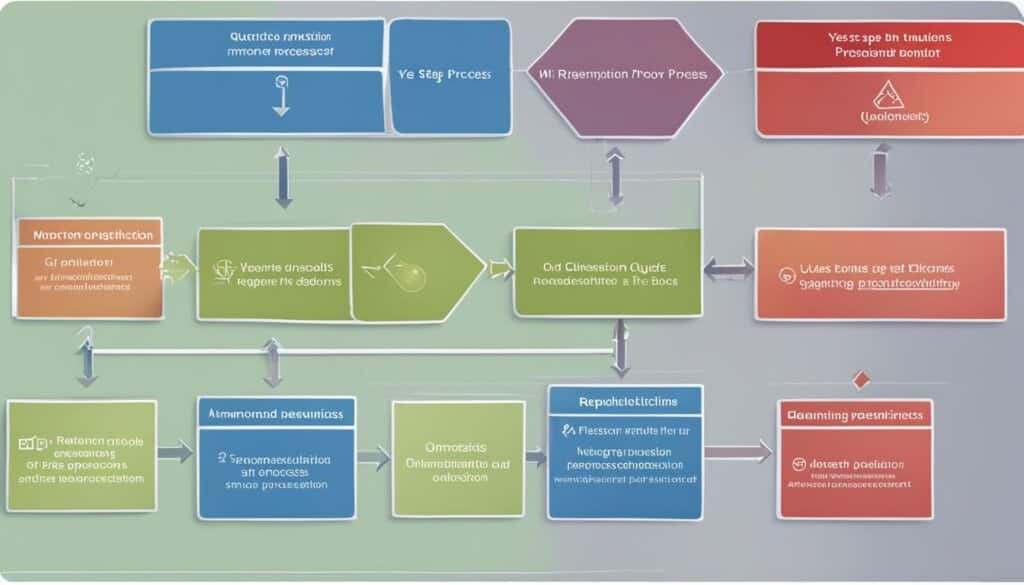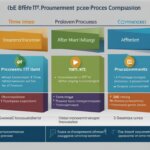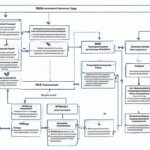Table of Contents
A requisition plays a crucial role in the procurement process of a business and is fundamental to effective business operations. It is a formal request made by a company to obtain a product or service needed for its operations. A requisition serves as a record, allowing businesses to track and account for all the requests made within their organization.
Requisitions often involve approval processes, ensuring that the requested items or services meet the necessary criteria and are aligned with the company’s budget and objectives. The requisition process requires the use of standardized documents known as requisition forms.
Requisition forms serve as a vital tool in maintaining an audit trail throughout the procurement process. These forms typically include relevant information such as the name of the requester, the date of the request, the items requested, the delivery location, and the department responsible for fulfilling the request. By utilizing these standardized forms, businesses can ensure accuracy and accountability in their procurement procedures.
Requisitions are commonly used to procure additional supplies, raw materials, or working hours for better inventory control. The procurement process, including requisitioning, is now often streamlined and automated through the use of Procure-to-Pay (P2P) systems. These systems enhance efficiency by automating the entire purchasing process, from requisition to vendor payment, further optimizing business operations.
In summary, understanding the requisition process is essential for businesses looking to maintain efficient and effective procurement practices. By implementing standardized forms and utilizing automated systems, businesses can streamline their approval processes, control spending, and improve overall procurement efficiency.
How a Requisition Works
A requisition is a crucial element for initiating and tracking specific actions within a business. Whether it’s procuring necessary supplies or managing future demand, a requisition serves as the catalyst for these processes.
There are two primary methods through which a requisition can be initiated:
- Purchase Requisition Form: This traditional approach involves filling out standardized documents known as requisition forms. These forms help maintain an audit trail and ensure the accuracy of inventory records, contributing to effective inventory control.
- Digital Requisition Process: With advancements in technology, businesses have embraced digital requisition processes. This streamlined approach eliminates the need for physical paperwork and offers convenience and ease of use.
“A formalized requisition process improves efficiency and accountability by providing a controlled and documented method for managing internal supply inventories and future demand.”
By adopting a standardized requisition process, businesses can achieve enhanced efficiency and accountability. The use of requisition forms or digital requisition platforms enables a controlled and documented workflow, ensuring that internal supply inventories are well-managed and future demand is carefully considered.
Furthermore, a standardized requisition process facilitates better inventory control, allowing businesses to accurately track and update inventory records. This precise management ensures that the right resources are available when needed, avoiding any disruption to operations.
“The use of standardized documents, such as requisition forms, helps maintain an audit trail and update inventory for better control.”
| Benefits of a Standardized Requisition Process |
|---|
| Improved efficiency and accountability |
| Enhanced inventory control |
| Accurate tracking of resources |
| Reduced risk of inventory and supply chain disruptions |
“A formalized requisition process improves efficiency and accountability by providing a controlled and documented method for managing internal supply inventories and future demand.”
By establishing a standardized requisition process, businesses can experience numerous benefits, including streamlined operations, reduced errors, and improved cost management. The requisition process serves as a vital component of effective inventory control and procurement, ensuring that the right resources are available at the right time.
Standardized Requisition Forms
When it comes to requisition processes, standardized requisition forms play a vital role in maintaining efficiency and productivity. These forms serve as documentation tools that capture essential information for seamless request fulfillment. Let’s delve into the key components of these forms and their significance.
Components of Requisition Forms
Requisition forms consist of various line items that provide crucial details for effective request management. These line items typically include:
- The name of the requester – This information helps identify the individual responsible for initiating the request.
- Date of the request – This date stamp allows for accurate tracking and assessment of processing timelines.
- Items requested – A comprehensive list of the requested items aids in inventory management and allocation of resources.
- Delivery date – This specifies the desired deadline for the delivery of the requested items.
- Delivery location – The location where the items should be delivered helps streamline logistics and ensure timely receipt.
- Contact information – Providing contact details ensures efficient communication between the requester and the fulfillment team.
- Department responsible – This indicates the specific department or team accountable for fulfilling the request.
- Signature of the individual fulfilling the request – A signature verifies the completion of the request and adds an extra layer of accountability.
By capturing these essential details, standardized requisition forms create a clear and structured framework that enables streamlined processing and fulfillment.
The Importance of Standardized Requisition Forms
In large corporations with multiple locations and centralized purchasing, standardized requisition forms are paramount for maintaining employee productivity. They provide consistent documentation that ensures requests are handled efficiently and according to established processes. Furthermore, these forms facilitate accurate tracking and reporting, which aids in budgeting, forecasting, and decision-making.
A well-designed requisition form acts as a reliable blueprint, guiding employees through the requisition process and enabling a smoother workflow.
Without standardized requisition forms, businesses may face challenges such as misplaced or incomplete requests, confusion regarding delivery specifics, and delays in fulfilling crucial supplies or services. By utilizing these forms, businesses can mitigate such risks and optimize their procurement operations.
Implementing digital requisition forms through automated systems can further enhance the efficiency and accuracy of the process. These systems enable electronic submission, approval workflows, and centralized databases, reducing manual errors and streamlining communication between stakeholders.
Now that we understand the importance of standardized requisition forms, let’s explore the key differences between purchase requisitions and purchase orders in the next section.
Purchase Requisition vs. Purchase Order
When it comes to procuring goods and services within a company, two terms often come up: purchase requisition and purchase order. While both play a crucial role in the procurement process, they serve different purposes and have distinct characteristics.
A purchase requisition is an internal form used to request the procurement of goods or services within a company. It acts as a formal document to initiate the purchasing process, providing details about the items needed and the corresponding quantities. However, it’s important to note that a purchase requisition does not create any legal or binding contractual obligations.
On the other hand, a purchase order is a contractual agreement that serves as a legally binding document between a company and an external vendor. Unlike a purchase requisition, a purchase order includes detailed information about the items being purchased, their prices, payment terms, and delivery dates. It acts as a confirmation of the agreed-upon terms and conditions between the buying organization and the supplier. A purchase order is typically issued once the purchase requisition has been approved by the relevant managerial authorities.
While a purchase requisition requires signoff from appropriate managers within the organization, a purchase order is sent to the vendor as a formal request to fulfill the specified requirements. The purchase order serves as a guiding document for the vendor, ensuring that the correct items are delivered, and that the terms and conditions of the agreement are met.
Key Differences between Purchase Requisition and Purchase Order
- A purchase requisition is an internal form, while a purchase order is a contractual agreement with an external vendor.
- A purchase requisition does not create any legal or binding contractual obligations, whereas a purchase order defines a legally enforceable agreement.
- A purchase requisition requires managerial signoff within the organization, while a purchase order is sent to the vendor for fulfillment.
- A purchase requisition provides basic details about the items needed, while a purchase order includes comprehensive information about the items, prices, payment terms, and delivery dates.
Understanding the distinction between a purchase requisition and a purchase order is crucial for maintaining efficient procurement processes and ensuring clear communication with vendors.
Example of a Requisition
To understand the requisition process better, consider an example where a health insurance company’s Learning and Development team needs new supplies for its training program.
The team lead submits a requisition form through the company’s automated requisition system. The request goes through multiple levels of approval, including management and the purchasing department. Once approved, a purchase order is created, listing the specific details of the order. The purchase order is then sent to the supplier for fulfillment.
| Requisition Process | Approval | Purchase Order |
|---|---|---|
| The team lead submits a requisition form | Request goes through multiple levels of approval | Purchase order is created, listing specific details |
| Automated requisition system | Management approval | Sent to supplier for fulfillment |
| Purchasing department approval |

Purchase-to-Pay Systems
Purchase-to-pay systems play a crucial role in modernizing and optimizing the requisition and procurement processes for businesses. With the increasing need for efficiency, accuracy, and automation, these systems have emerged as a valuable solution. By streamlining the entire procurement journey, from requisitioning to purchasing and payment, they ensure a seamless and organized workflow.
One of the key benefits of procure-to-pay systems is the automation they bring to the table. Manual requisition processes can be time-consuming and prone to errors, leading to delays and inefficiencies. However, with automated systems, users can easily select items from a catalog and submit requisitions for approval. This eliminates the need for manual paperwork and speeds up the entire process, allowing businesses to operate with enhanced efficiency.
The automation provided by purchase-to-pay systems also contributes to increased accuracy. These systems eliminate the risk of human errors that often occur in manual processes. By standardizing and digitizing the requisition process, businesses can ensure that the right information is captured accurately, reducing the chances of mistakes and miscommunication.
The Efficiency Impact
Implementing procure-to-pay systems can have a significant impact on the efficiency of procurement processes. By centralizing and automating the requisition process, businesses can reduce paperwork, shorten approval cycles, and streamline communication between departments. This translates into faster response times and improved collaboration, ultimately leading to more efficient operations.
Moreover, purchase-to-pay systems bring about cost savings for businesses. According to industry reports, these systems can reduce procurement costs by approximately 80%. By eliminating manual processes, businesses can save on administrative overheads and optimize resource allocation. The streamlined workflow also enables better negotiation and control over spending, helping businesses make informed decisions and maximize their purchasing power.
Overall, procure-to-pay systems offer businesses the tools they need to enhance efficiency, accuracy, and control in their procurement processes. By automating and streamlining the requisition process, businesses can optimize their operations, reduce costs, and improve their bottom line.
Efficiency Checklist:
- Implement a procurement software system to automate and standardize the requisition process.
- Centralize the requisition process to streamline communication and collaboration between departments.
- Select items from catalogs to simplify and expedite the requisitioning process.
- Empower users to submit requisitions digitally for faster processing and approval.
- Utilize analytics and reporting capabilities to identify bottlenecks and improve efficiency.
Other Definitions of Requisition
In different contexts, the term requisition can refer to requisitioned property, job requisition, and requisition reconciliation.
Requisitioned property: This refers to property taken by the government with compensation to the owner. It is a legal process where the government acquires private property for public use.
Job requisition: A job requisition is a formal request to hire someone for a job. It is the first step in the hiring process and includes details such as the job description, required qualifications, and the number of positions needed.
Requisition reconciliation: Requisition reconciliation in accounting is the process of comparing two sets of records for accuracy and consistency. It ensures that the requisitioned items or services match the documented records and that any discrepancies are resolved.
These various definitions of requisition highlight the diverse contexts in which the term is used, from government acquisition of property to the hiring of employees and the importance of proper accounting practices.
Importance of a Standardized Requisition Process
A standardized requisition process is crucial for businesses to optimize their purchasing operations. By implementing a standardized process, organizations can ensure efficiency and control throughout the procurement cycle, from request to payment. Not only does it allow for better tracking and tracing of important purchasing information, but it also enables the involvement of the right stakeholders and approvers, ensuring transparency and accountability.
One of the key benefits of a standardized requisition process is the establishment of a purchase order system that creates an audit trail. This helps to reduce the risk of fraud and unauthorized spending by providing a clear record of all purchase orders generated. With a standardized process in place, businesses can maintain greater control over their spending and ensure compliance with internal policies and external regulations.
Another advantage of implementing procurement software is the ability to streamline the requisition process. Manual work and human error are minimized, resulting in greater accuracy and efficiency. By using automated digital forms and centralized databases, businesses can simplify the request and approval workflow, expedite actions, and reduce the time and effort required for purchasing activities.
In addition to improving control and efficiency, a standardized requisition process has the potential to generate significant cost savings. By implementing procurement software and leveraging automation, businesses can eliminate unnecessary manual tasks, optimize supplier relationships, and take advantage of volume discounts. These cost savings can contribute to the overall financial health of the organization and free up resources for other strategic initiatives.
FAQ
What is a requisition?
A requisition is a formal request for obtaining a product or service, typically initiated by a business. It is used to keep track of and account for all requisitions made within a business.
How does a requisition work?
A requisition initiates the request for a specific action and records that action for subsequent reporting needs. It can be initiated through a purchase requisition form or a digital requisition process. Standardized documents, such as requisition forms, help maintain an audit trail and update inventory for better control.
What information is included in a requisition form?
Requisition forms typically include line items such as the name of the requester, date of the request, items requested, delivery date, delivery location, and contact information. They also include the department responsible for fulfilling the request and the signature of the individual fulfilling the request.
What is the difference between a purchase requisition and a purchase order?
A purchase requisition is an internal form used for procuring goods and services within a company, while a purchase order is a contractual agreement used when ordering goods and services from an external vendor. A purchase requisition requires managerial signoff, whereas a purchase order includes detailed information about the items purchased, their prices, payment terms, and delivery dates.
Can you provide an example of the requisition process?
Sure, let’s say a health insurance company’s Learning and Development team needs new supplies for its training program. The team lead submits a requisition form through the company’s automated requisition system. The request goes through multiple levels of approval, including management and the purchasing department. Once approved, a purchase order is created, listing the specific details of the order. The purchase order is then sent to the supplier for fulfillment.
What are purchase-to-pay systems?
Purchase-to-pay systems streamline and automate the requisition and procurement processes. These systems handle requisitioning, purchasing, and payment, increasing efficiency and accuracy in accounting. They can reduce costs by approximately 80%.
What are other definitions of requisition?
In different contexts, the term requisition can refer to requisitioned property, which is property taken by the government with compensation to the owner; a job requisition, which is a formal request to hire someone for a job; and requisition reconciliation in accounting, which is the process of comparing two sets of records for accuracy and consistency.
Why is a standardized requisition process important?
Having a standardized requisition process is essential for making efficient and controlled purchases in a business. It helps track and trace important purchasing information, involve the right stakeholders and approvers, and establish a purchase order process that creates an audit trail and reduces the chances of fraud.












